One of the most impactful memories of the Expo 2025 in Osaka was the lines. Lines for food, lines for pavilions, lines for restaurants and shops. But also lines for basic accessibility infrastructure like the elevator to go to the upper level of the ring, filled up with visitors using wheelchairs, walkers and baby strollers – cramming into a single elevator 2-3 groups at a time. Of course there were also winding lines for the toilets. Whether it was just the days I went, or every day, on the day I went there were many people with accessibility needs (seniors, young parents needing a baby changing table, people with disabilities) at the Expo – and that meant there was also a long line for the accessible toilets. At a given rest stop area, while there were nearly 70 stalls for men and women, there were only two accessible toilets and a 20+ minute wait. While the lack of toilets was expected in the public areas, I assumed that the bigger pavilions would also have rest stops, but most didn’t. Thankfully, my job that day was to explore the accessibility features of a specific pavilion – and it DID have accessible rest rooms. Incredible ones.
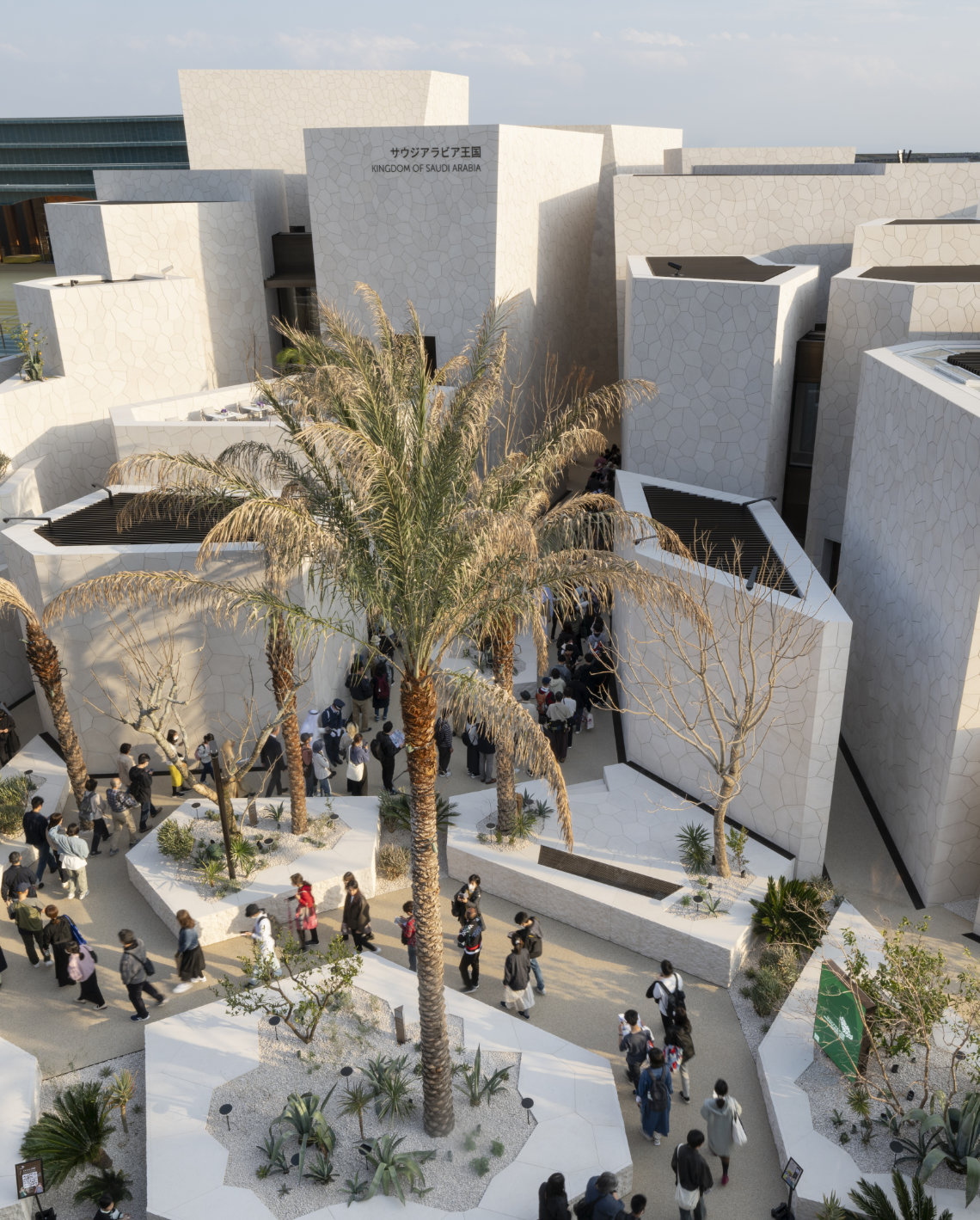
- Photo Credit: Nigel Young | Foster + Partners
The Kingdom of Saudi Arabia pavilion was designed by Foster + Partners and wasn’t single a pavilion building but a recreation of a traditional Saudi Arabian village with high walls and winding streets to help keep people cool in the heat. Unlike some of the pavilions where people in wheelchairs were taken through a separate accessible entrance, visitors to the Kingdom of Saudi Arabia pavilion could take the same gently sloping path into the pavilion as their friends and family.
Once inside the pavilion area, guests are guided to follow the paths leading between buildings, each containing an exhibit on a different themes including art, ecology and more. The paths were smooth and there are no steps into the different buildings. Each building also has a braille label indicating what building it is. There is plenty of room to navigate a wheelchair around the items on display in each exhibit and most displays are at a height that makes it easy to get close and learn and explore.
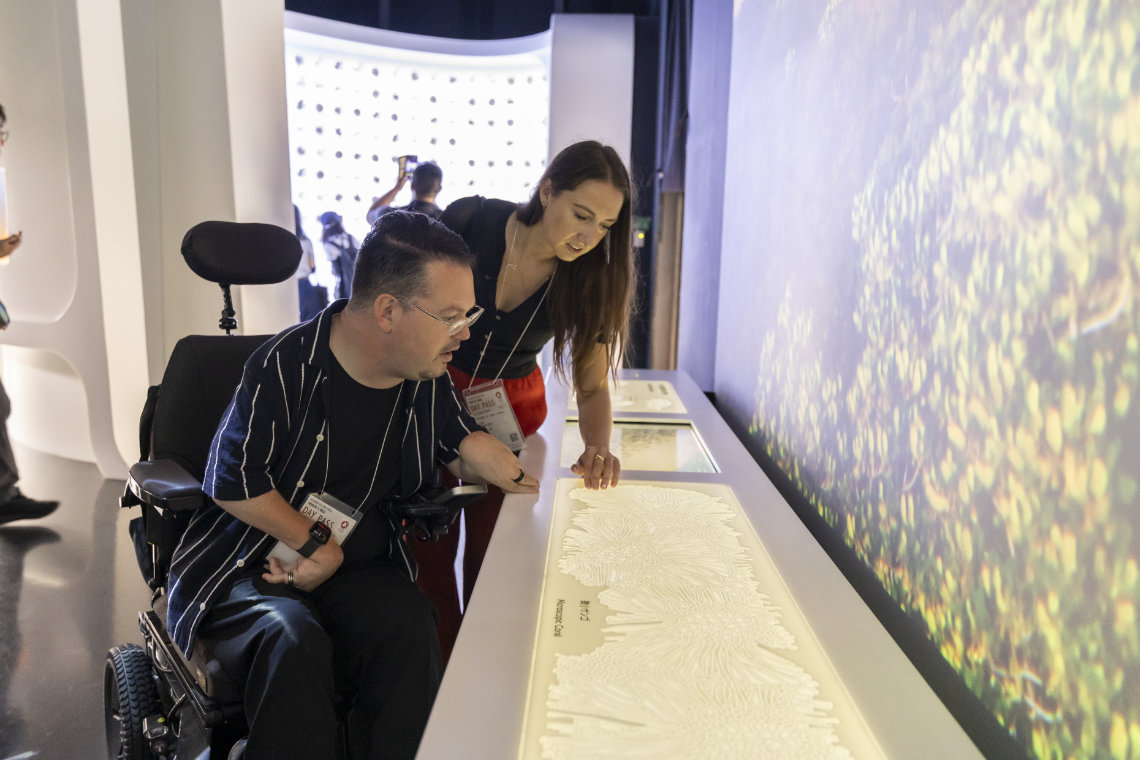
After going through the exhibits, there was an opportunity to explore the gift shop and cafe which were themed like a traditional market. Products were at an easy to see height and the cafe had a lowered counter for wheelchair users to use when purchasing Saudi Arabian coffee (which was a delicious mix of spices!). This is also where I encountered the first of several accessible toilets.
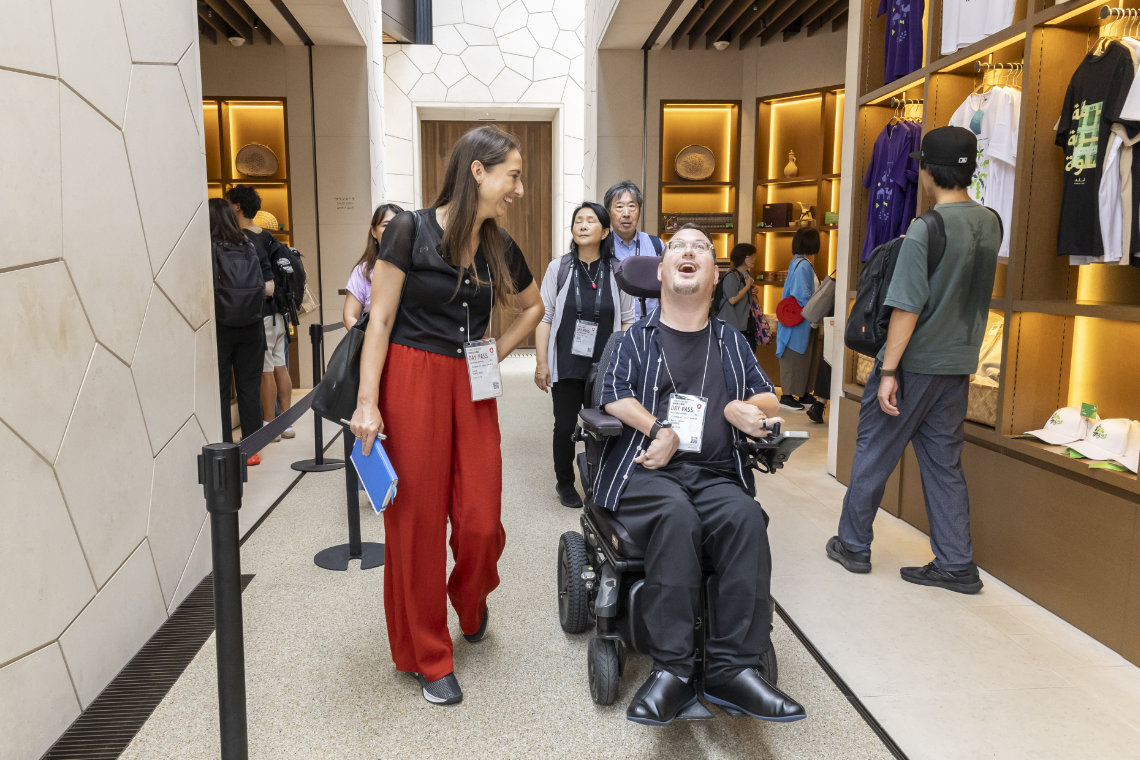
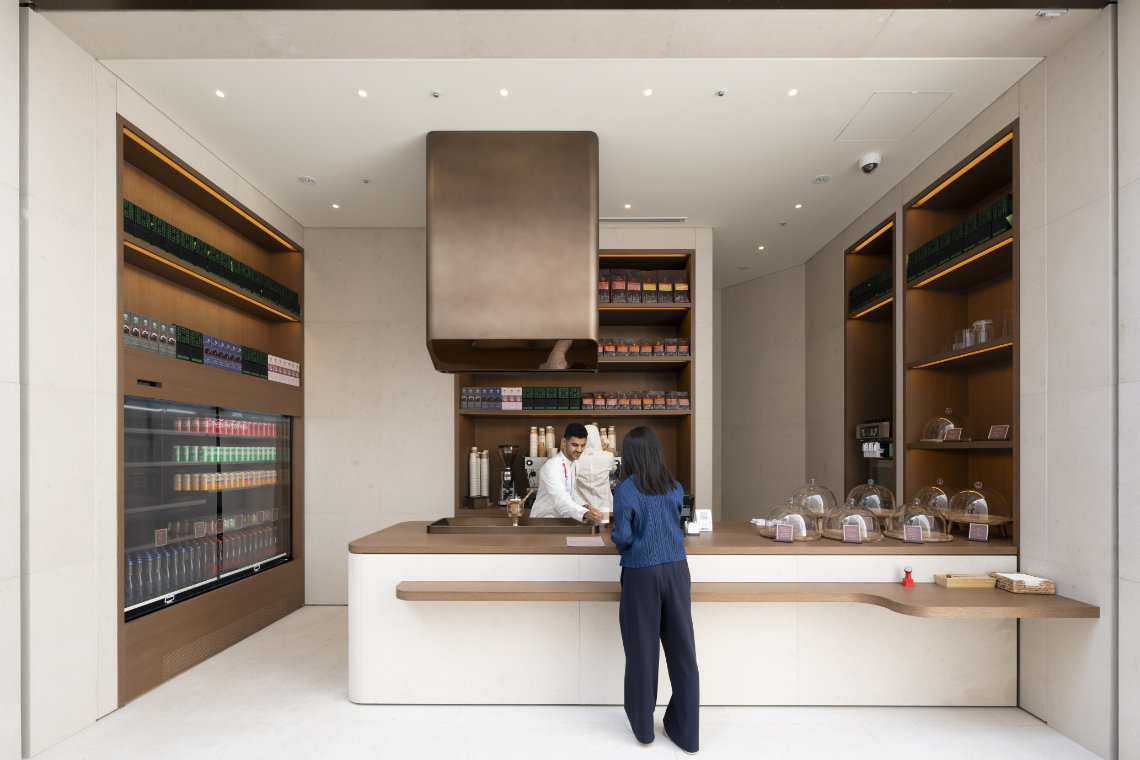
There was a set of men’s and women’s toilets by the cafe that had a separate large accessible toilet with plenty of space, handrails and a backrest. While this was just what I needed, I was also shown a separate multi-purpose toilet next to it. There was staff on hand to ensure that it was only used by those who actually need it (which is always welcome at crowded events when people who don’t need the accessible toilet tend to make exceptions for themselves when other toilet lines get long…). Inside was a large room with plenty of space to get around, handrails and a backrest on the toilet, an ostomate sink for colostomy users, a sink with a cutaway underneath for wheelchair users’ legs and… a ceiling-mounted hoist. The hoist provided access to a full sized bed that, even when folded down, left enough space to maneuver in a wheelchair. There are plenty of unisex, multipurpose toilets in Japan, but they tend to be limited to a toilet, a sink and possibly a colostomy sink. Full sized changing beds are slowly starting to appear in some larger toilets but are still by far the minority. A public toilet with a ceiling-mounted hoist is unheard of – and while I cannot make the claim they are the only ones in Japan, I can say that they are the first I have seen in my 18 years of living here!
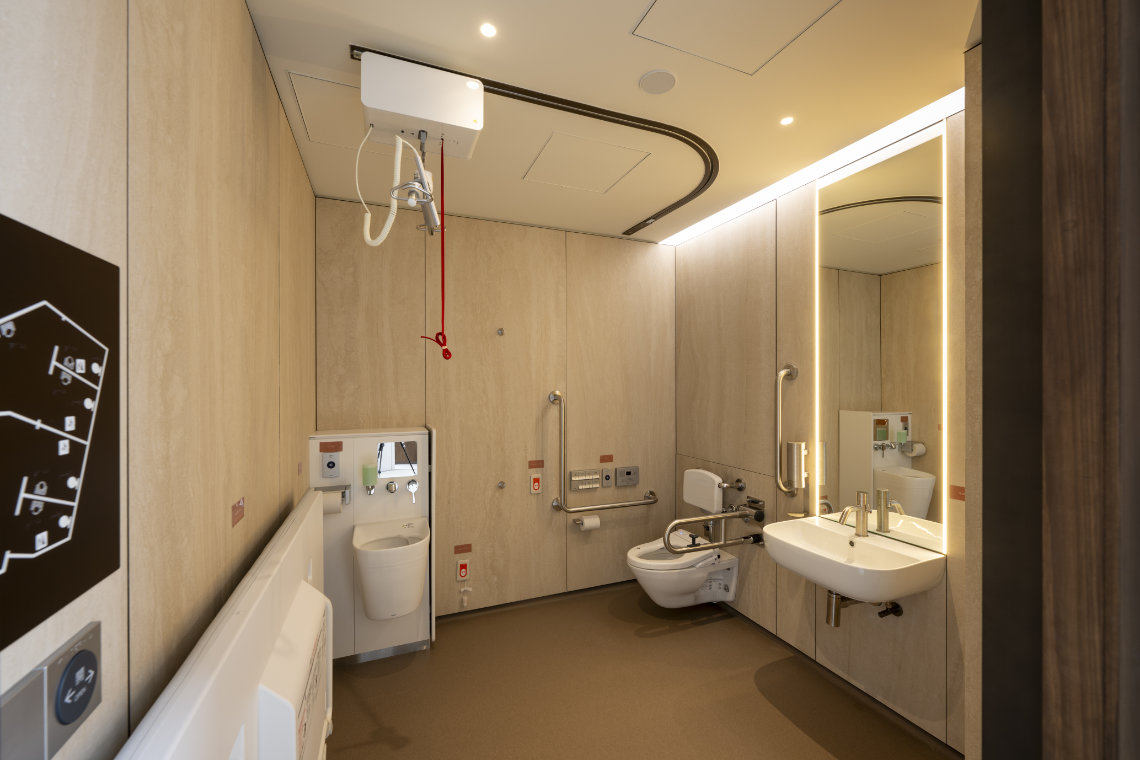
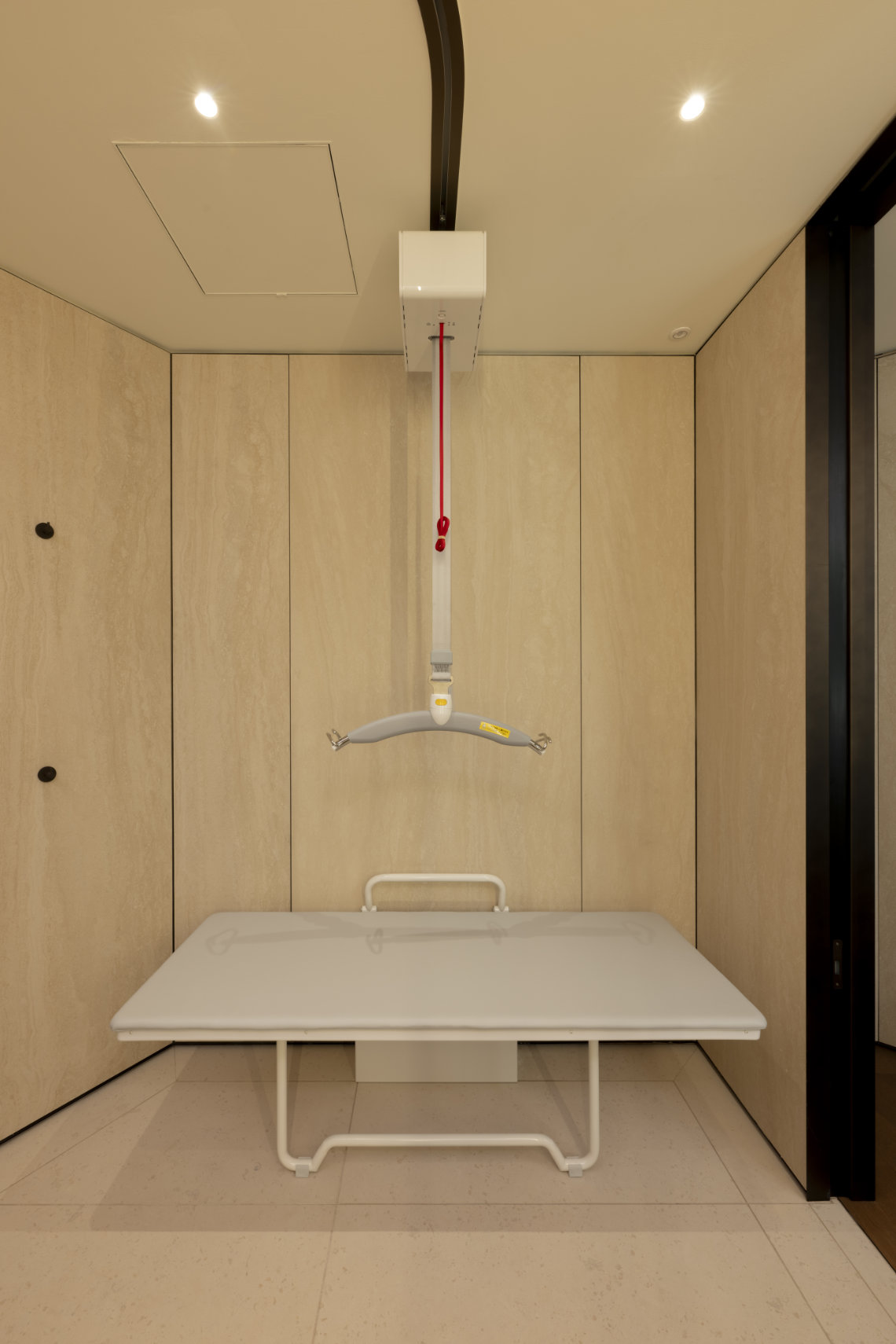
After using the facilities, it was time for lunch at the restaurant on the upper floor. Heading for the elevator, I spotted another rarity – a calm down / cool down room. While the concept has started to gain attention in Japan, calm down rooms are mostly limited to airports and a few stadiums. While it was simple in design and features, it would definitely be essential for an event as overwhelming as the Expo. Next to it was also a small medical station for those who were feeling unwell. Two lovely surprises on the way to a lovely lunch.
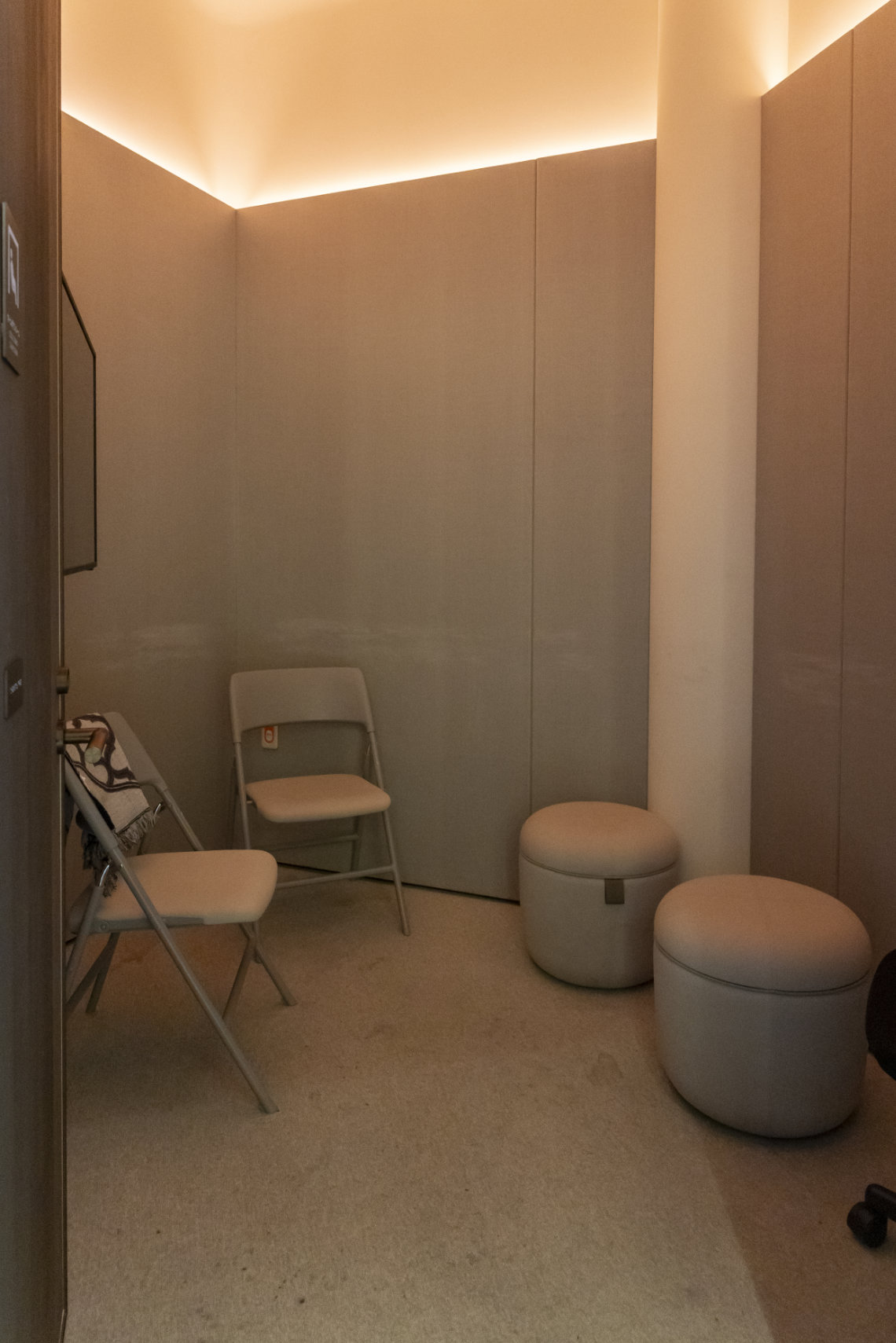
An elevator with lowered buttons was available to guests heading to the upper floor restaurant, and though after exiting on the upper floor there was a door into the restaurant, the staff were quick to notice and open the doors. The restaurant featured a mix of tables and an adaptation of traditional seating on low-height sofas. These sofas were raised to chair height and had a cut away at the entrance which would allow some wheelchair users to transfer and try out the traditional style. As my legs don’t easily bend, I opted for the table seating. I often struggle with lower tables and bumping my knees in Japan as I ride a higher wheelchair made in Europe, so, it was great that both the indoor area and terrace tables were the perfect height to enjoy the amazing meal.
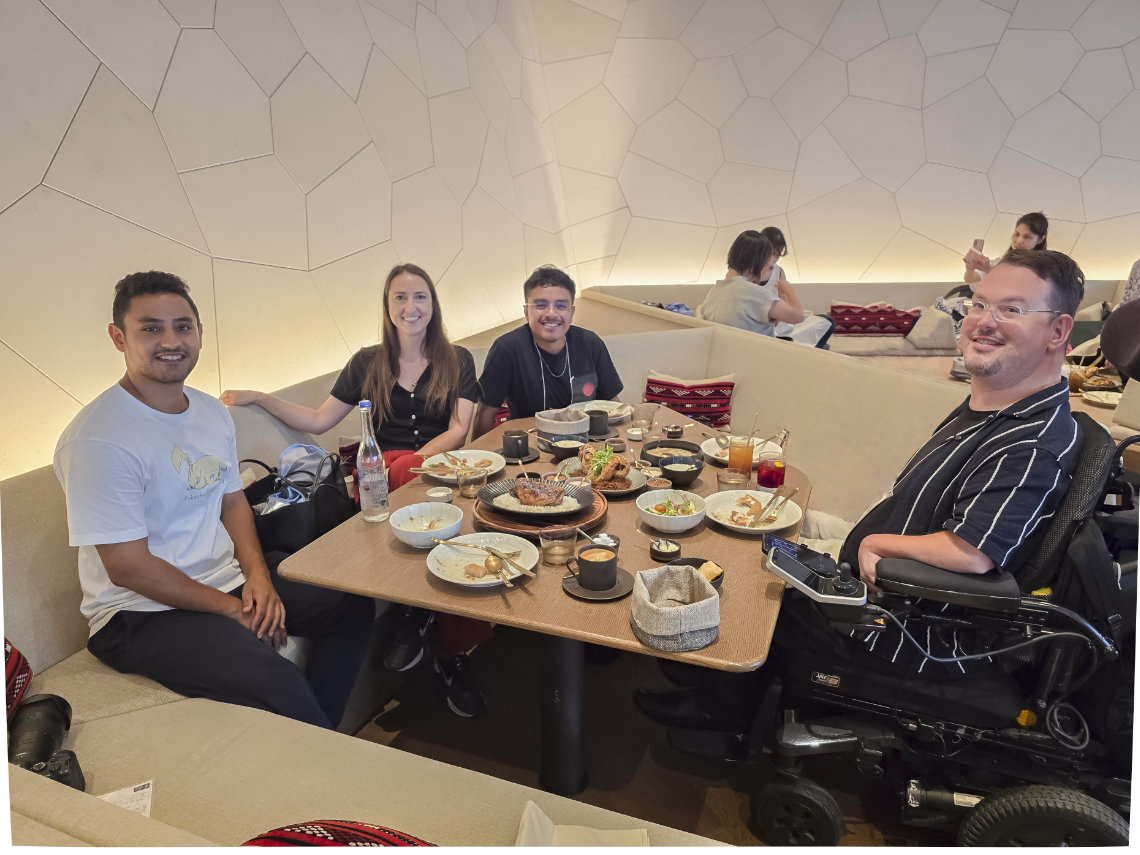
Before heading out to explore more of the expo, I popped into the toilet on the restaurant floor and – to my amazement again – there was another hoist. This one connects both the adult-sized changing bed and the toilet, offering an even more adaptable facility. So, both the first and the second ceiling-mounted hoists I saw in Japan were both in the Kingdom of Saudi Arabia.
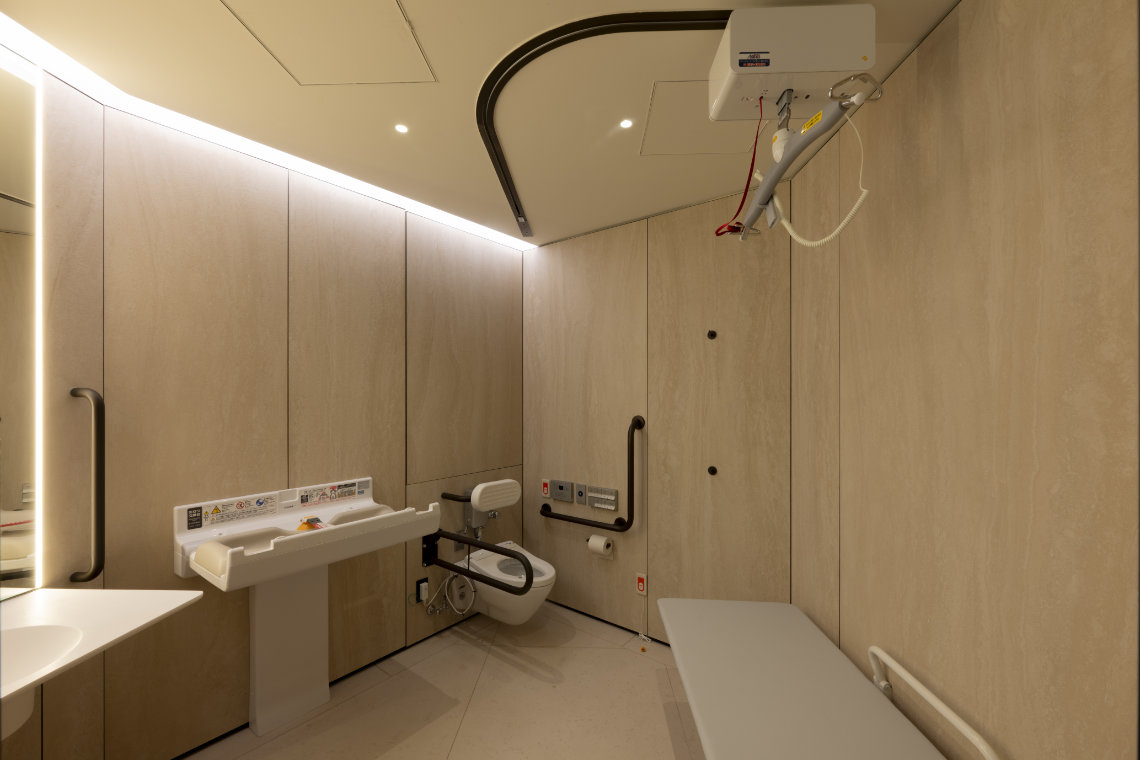
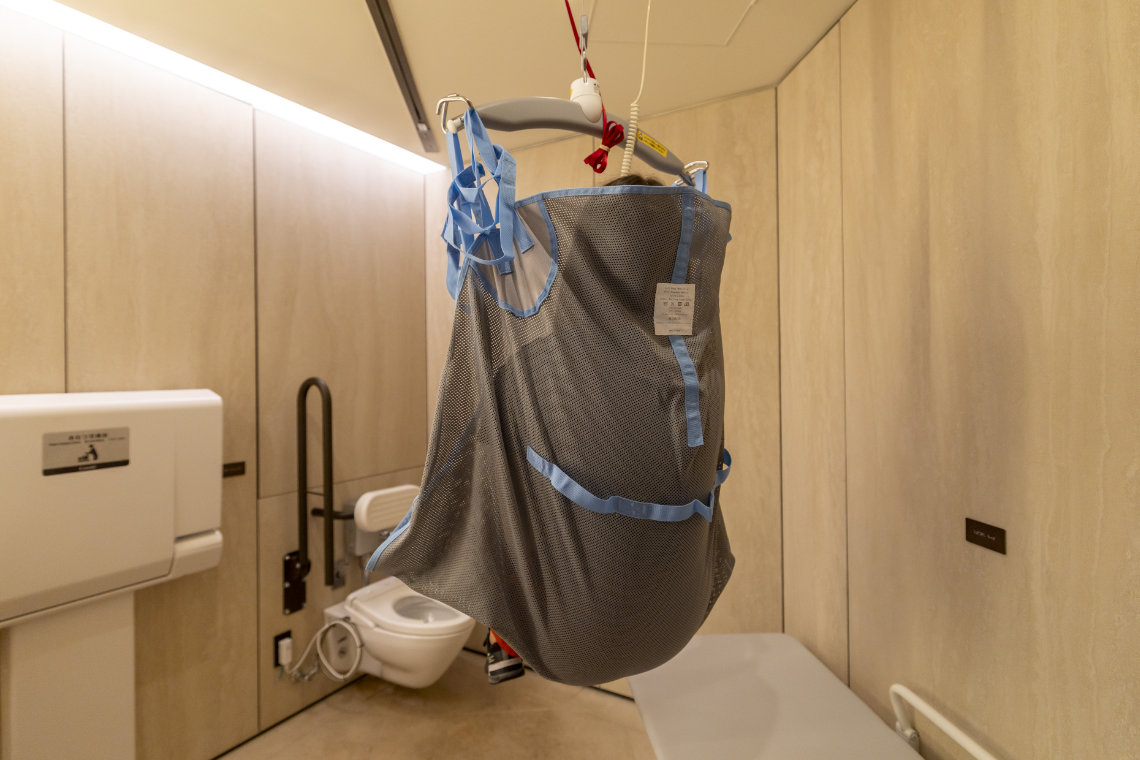
After wandering around the expo grounds and spending time in lines waiting for (much less welcoming!) toilets, I returned to the Kingdom of Saudi Arabia’s pavilion for an evening show in the village center performance area. The performance area was pretty amazing in itself as various parts of the flooring could be raised to create stages of various configurations. Staff helped me and other wheelchair users find spaces with a clear view of the show – projection mapping on various walls telling stories while a cellist played on stage. It was a great end to an amazing visit.
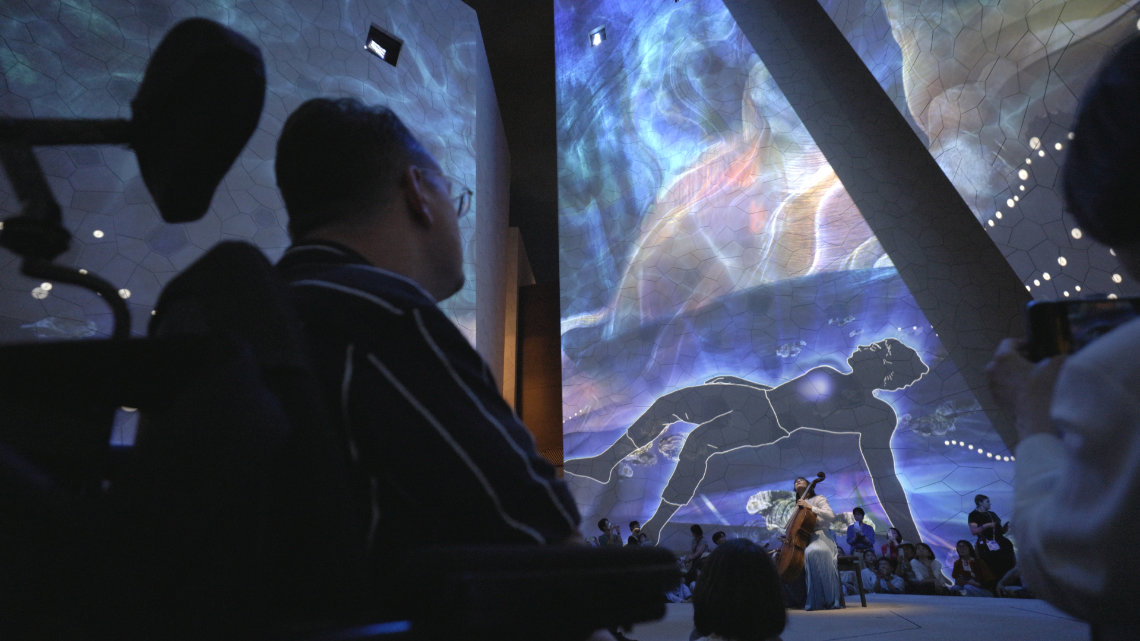
Thinking back on the day, I remember the first interaction I had at the pavilion. Upon arrival we met an individual who was so excited about the accessibility features I had come to see. They saw that hoists had been added into the pavilion, and couldn’t wait to tell us about their existence, stating they wanted to cry for joy when they’d seen them. I hope that one day, hoists and other accessibility features will not invoke tears, but be completely normal. And I feel that the Kingdom of Saudi Arabia’s pavilion will help bring that into reality. The Expo is a place to share ideas, learn, and take what you have seen back home with you. While the ground floor accessible toilet was protected for those who needed it, the toilet by the restaurant was the only toilet on the floor and therefore shared by everyone. I imagine some visitors would go in and see the hoist and be filled with joy like the first person we met. While others will have gone in and been puzzled by what it was. Both of them would likely have gone and told someone else – and that is how accessibility spreads and becomes a new normal. The Kingdom of Saudi Arabia and Foster + Partners did a great job of showing what was possible with well integrated inclusive design, I hope it becomes the new benchmark both here in Japan and at Expo 2030 in Riyadh.
This post was sponsored by Foster + Partners but all opinions are my own.

Responses